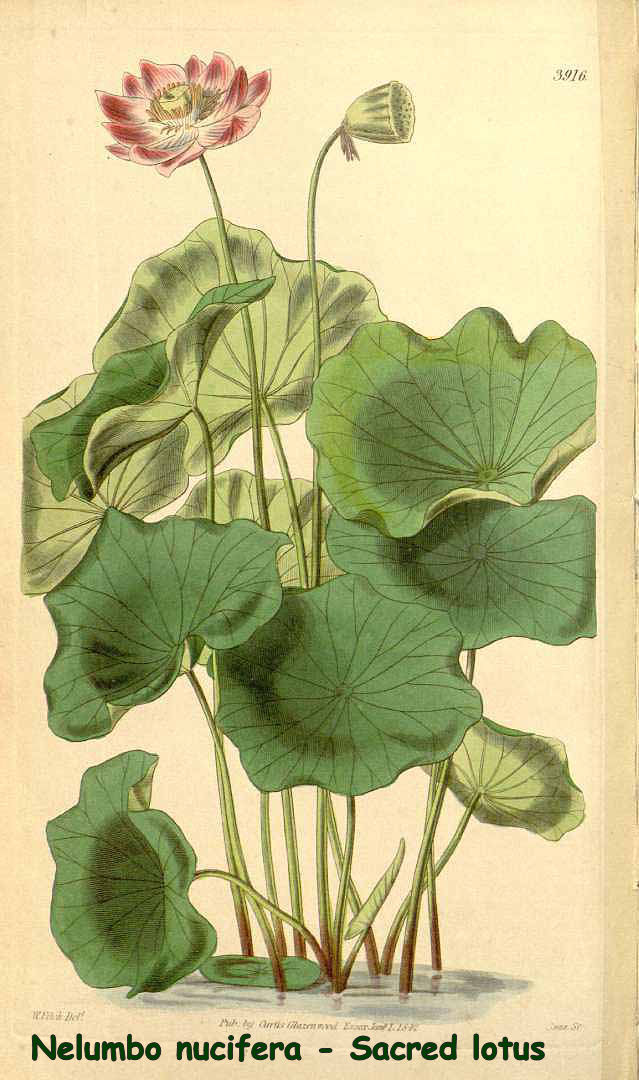 |
 |
NELUMBO NUCIFERA - SACRED LOTUS. Common name
Common name Kamal, renkon, hasu, lian, Egyptian lotus, teratai, sacred water-lily, sacred lotus, bunga telpok, ngau, baino, nelun ala, bua-luang, pink lotus, Indian lotus, lian zi, renshi. Family Nymphaeaceae or Nelumbonaceae. Overview For thousands of years the lotus has been a divine symbol in Asian traditions representing the virtues of sexual purity and non-attachment. Sacred lotus is an aquatic perennial, originally from Indonesia and India. This plant is growing abundantly in Suriname. It grows-up to a height of 19 feet depending on the dept of the swamp or creek it is growing in. The roots of sacred lotus are firmly planted in the mud beneath the water surface and the plant has long stems to which the leaves and flowers are attached. The big circular leaves are floating at the surface and the flowers above it. These flowers open early in the morning and can be 9 inches across. The fruit is a conical shaped pod with the seeds arranged in holes; when the seeds are ripe, they are released because the pod bends downwards to the water. The pink sacred lotus blooms year around. The flowers, seeds, young leaves and rhizomes are edible, while the big mature leaves, 2 feet in diameter, are used to wrap steamed food. These leaves are dried. They are soaked in boiling water; drained and the food to be steamed (dim-sum, sticky rice parcels) is wrapped in it. In the Asian cuisine, the petals are placed in soups or used as garnish. The seeds can be roasted while the rhizomes can be boiled. This plant has also traditional medicinal uses and contains the alkaloids nuciferine and aporphine. Applications are against diarrhea, hemorrhoids; the seeds are used against fever and insomnia. The flowers are used against syphilis and are effective in the management of cardiac ailment; the pods are used to stop bleeding. The petals steeped in wine or teas have a calming effect. Restlessness, nervousness and depression – have been treated using the seeds, flowers and leaves. Visit also our APPLICATION & DOSAGE -, CHOLESTEROL -, DIABETES - , HYPERTENSION - and TINCTURE pages. Hardiness USDA zone 4- 11. Propagation Seeds and rhizomes. Culture Full sun; winter hardy as long as the roots do not freeze. If everything goes according to schedule, some of the seeds should begin sprouting within a few days. The minimum temperature for this to happen is approximately 60 F. Temperatures up to 85 F speed up the process. The start of the sprouting is determined by the gradual splitting of the seed coat starting at the dimple end. The seeds can stay dormant for many years, even in a perfect environment. They may need scarification and must be buried or sunk into a pond or creek. |
|
For the right freight rate, shipping charges, conditions and delivery service, please visit our Webstore page! |